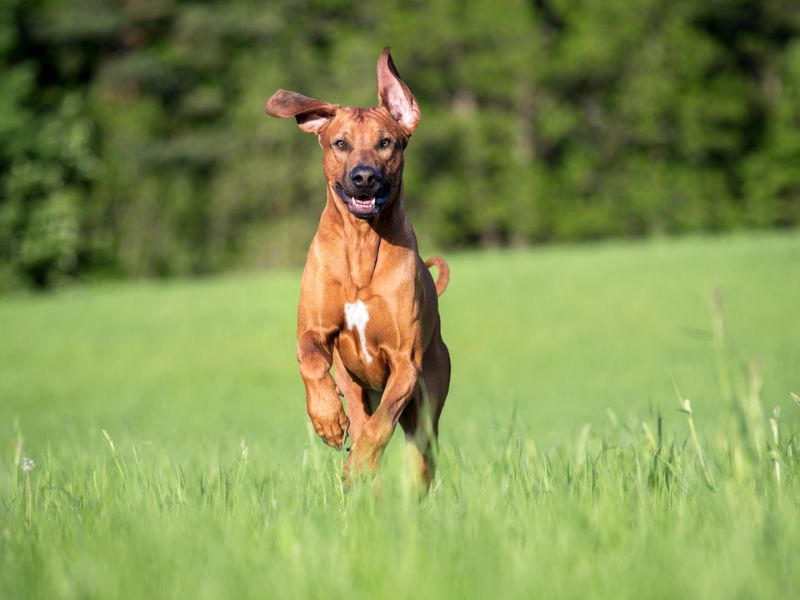You may have seen your canine companion nibbling on green blades during your daily walk, and wondered: What does it mean when dogs eat grass? Is it a harmless quirk, or a signal that something is amiss? Grass‑eating is a surprisingly common behavior among domestic dogs, observed across breeds, ages, and living environments. In this article, we’ll dive into why dogs engage in this behavior, when it can be cause for concern, and how to manage or discourage it if necessary. By the end, you’ll have a clear understanding of the motivations behind grass‑eating and practical steps to keep your dog happy and healthy.
1. Is Grass‑Eating Normal for Dogs?
First and foremost, it’s important to recognize that grass‑eating is generally considered a normal canine behavior. Studies estimate that up to 80% of dogs have eaten grass at least once in their lives. In the wild, wolves and other canids consume plant matter—often from the stomach contents of herbivore prey—suggesting that grass‑eating may be an inherited, instinctual habit rather than a strictly pathological one.
Domestic dogs, sharing ancestry with wild wolves, often exhibit similar foraging behaviors. When you see your dog grazing, think of it as a remnant of this ancestral diet. In most cases, occasional grass consumption does not signify a serious problem. Understanding that grass‑eating can fall within the spectrum of normal behaviors helps reduce unnecessary worry—yet, knowing the underlying reasons is equally important to discern when action is needed.

2. Possible Reasons Why Dogs Eat Grass
When owners repeatedly ask, “What does it mean when dogs eat grass?”, veterinarians point to several overlapping explanations. No single reason applies to every dog; rather, grass‑eating often arises from a blend of instinctual, dietary, and behavioral factors.
A. Dietary Needs and Fiber
One of the most cited reasons is that dogs seek additional fiber. Grass contains insoluble fiber, which can aid intestinal motility and relieve mild constipation. If a dog’s commercial diet is low in roughage, the animal may instinctively supplement fiber intake by nibbling grass. While most balanced dog foods include adequate fiber, individual variations in digestion sometimes prompt grass‑eating for gastrointestinal comfort.
B. Instinctual and Evolutionary Behavior
Modern dogs carry genetic legacies from their wild ancestors, who ate entire prey—including stomach contents packed with plant material. This ancestral behavior may drive domestic dogs to graze on grass, fulfilling an ingrained foraging impulse. Unlike humans, dogs rely strongly on scent and taste exploration of their environment, and grass‑eating can simply reflect that evolutionary heritage.
C. Gastrointestinal Relief
A long‑held belief is that grass‑eating induces vomiting to alleviate stomach upset. Indeed, some dogs eat grass and then vomit shortly after. However, research shows that less than 25% of grass‑eating episodes lead to vomiting, suggesting that this is not the primary motivator for most dogs. Still, mild gastric discomfort might prompt some individuals to chew grass in search of relief—even if it doesn’t always trigger emesis.
D. Behavioral and Emotional Factors
Boredom, anxiety, or stress can also manifest as grass‑eating. Dogs left alone for extended periods or lacking sufficient mental and physical stimulation may resort to grazing as a self‑soothing or attention‑seeking behavior. Observing when and where your dog eats grass—during long stretches alone or immediately after returning home—can shed light on whether emotional triggers are at play.
E. Taste, Texture, and Novelty
Sometimes, dogs simply enjoy the crisp texture and fresh taste of grass. Just as some humans crave crunchy snacks, dogs can develop a preference for the mouthfeel of certain grasses, especially when new shoots emerge in spring. Seasonal changes in grass moisture content and flavor can temporarily increase a dog’s grass‑eating frequency without indicating any underlying issue.
3. When Should You Be Concerned?
Although most grass‑eating is harmless, certain patterns warrant closer attention and possibly veterinary consultation:
- Excessive Consumption: If your dog spends a large portion of its outdoor time grazing rather than exploring or playing, this may suggest a nutritional imbalance or behavioral issue.
- Frequent Vomiting: Occasional vomiting after grass‑eating can be normal, but repeated episodes—especially if they occur even without grass ingestion—could signal gastrointestinal disease.
- Changes in Appetite or Weight: A dog that turns to grass in lieu of eating regular meals, or loses/gains weight unexpectedly, requires an evaluation of its diet and health status.
- Lethargy or Discomfort: Indicators such as abdominal pain, bloating, or lethargy accompanying grass‑eating could point to more serious conditions like pancreatitis or intestinal obstruction.
- Environmental Risks: Grass treated with pesticides, herbicides, or fertilizers poses toxicity concerns. Additionally, wild grasses may harbor parasites, sharp seeds, or burrs that injure the mouth and throat.
If you observe any of the above signs, contact your veterinarian to rule out medical causes and receive tailored guidance.

4. Potential Risks of Grass Consumption
While occasional, uncontaminated grass‑eating usually carries minimal risk, be aware of these potential hazards:
- Chemical Exposure: Lawn treatments can leave toxic residues. Always verify that your yard is free of harmful chemicals before allowing unsupervised grazing.
- Parasitic Infection: Outdoor grass may harbor intestinal parasites. Regular deworming and fecal testing help protect against such risks.
- Physical Injury: Seeds or sharp grass blades can damage the oral mucosa, throat, or intestinal lining if swallowed in large clumps.
- Obstruction: Though rare, swallowing long grass blades can contribute to gastrointestinal blockage, particularly in smaller breeds or dogs prone to ingesting indigestible matter.
Preventive measures—such as supervised outdoor time in untreated areas—minimize these dangers while allowing natural grass‑eating behaviors to continue safely.
5. How to Manage or Prevent Grass‑Eating
If you determine that grass‑eating is excessive or undesirable, the following strategies can help redirect or reduce the behavior:
- Ensure a Balanced Diet: Choose high‑quality dog food with sufficient fiber content. If needed, add veterinarian‑approved supplements such as canned pumpkin or psyllium husk to boost digestive regularity.
- Increase Exercise and Enrichment: Provide daily walks, interactive toys, puzzle feeders, and training sessions to occupy your dog’s mind and body, reducing boredom‑driven grazing.
- Training and Redirection: Teach a reliable “leave it” cue. When your dog approaches grass, use the command and reward alternative behaviors, such as playing fetch or practicing obedience drills.
- Restrict Access: In problem areas, erect fencing or use pet‑safe deterrent sprays to discourage grass consumption. Create a dedicated, untreated grassy patch where your dog can graze safely if desired.
- Monitor and Supervise: Observe outdoor sessions closely, especially in chemically treated landscapes. Intervene promptly when grass‑eating begins, and redirect to more appropriate activities.
Implementing these measures not only curbs unwanted grazing but also promotes overall wellbeing by addressing root causes of the behavior.
So, what does it mean when dogs eat grass? In most cases, it reflects a normal, instinctual behavior with a variety of harmless motivations—ranging from dietary fiber needs and ancestral foraging instincts to a simple enjoyment of texture and taste. Occasional grass‑eating rarely poses a serious health threat. However, when grazing becomes frequent, uncontrolled, or accompanied by signs of illness, it deserves veterinary attention to rule out underlying conditions or environmental hazards.
By providing a balanced diet, enriching your dog’s daily life with exercise and mental challenges, and supervising outdoor activity in safe areas, you can support healthy canine habits while allowing your dog the occasional grass snack. Understanding the nuances behind this common behavior ensures you can foster your dog’s natural instincts without compromising its health—answering the question, what does it mean when dogs eat grass, with confidence and clarity.

